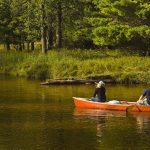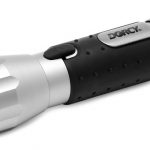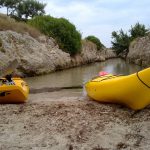Greetings, fellow water enthusiasts!
Are you ready to take your canoeing game to the next level?
Well, you’re in luck, because today we’re diving (or should we say, paddling) into the world of the best canoe paddles.
Now, we know what you’re thinking: “Aren’t all canoe paddles created equal?” Oh, how wrong you are, dear reader! There are paddles for every type of paddler, from the weekend warrior to the hardcore canoeist.
So, whether you’re looking for a lightweight paddle for a leisurely float down the river, or a durable, high-performance paddle for tackling rough rapids, we’ve got you covered. Join us on this paddle-powered adventure and let’s explore the best canoe paddles on the market today.
Trust us, you won’t want to miss out!
Best Canoe paddles – introduction
Going canoeing provides an amazing experience that allows people to observe nature, unwind, and have a great time. Have you ever thought about how crucial the canoe paddle is? A canoeist needs a canoe paddle to help them move their canoe in the water and make it go in the desired direction.
The form, dimensions, and construction of the paddle can significantly influence how efficiently the canoe operates in the water, so getting familiar with the background, varieties, and advantages of canoe paddles is indispensable for optimizing your canoeing journey.
The origins of canoe paddles have been traced back for many years, with individuals fashioning them from materials like wood, stone, and other components. As technology progressed, so did canoe paddles, with the introduction of new materials and designs that allowed for improved performance and control.
Canoes are generally equipped with paddles that are now constructed out of wood, plastic, or fiberglass. Picking the right material can be a complex decision, as every option has its benefits and drawbacks. Wood oars are lightweight and tough, but they might need more upkeep than plastic and fiberglass oars.
Canoe paddles are available in a variety of forms. Paddles that are intended to be used on placid waters like lakes and rivers feature a distinct design compared to those made to maneuver throughFast-flowing rapids or whitewater.
The magnitude of the paddle is also essential, as a bigger paddle can make more power, whereas a smaller one is more manageable.
The optimal use of a canoe paddle is crucial to making the most of your canoeing experience. Using the appropriate technique can make swimming in the water more efficient and will protect against feeling tired and getting injured.
Acquiring knowledge of the essential elements of the right canoeing posture, such as the J-stroke and C-stroke, is beneficial in becoming a better and more knowledgeable canoeist.
It doesn’t matter if you have been canoeing for a while or are just beginning, the correct paddle can dramatically improve your experience. Familiarizing oneself with the background of canoe paddles, their distinctive sizes, forms, and materials, and the value of appropriate technique is imperative for having the best possible canoeing experience.
Investing the effort to inform oneself about the advantages of canoe paddles is an important step for guaranteeing readiness for any journey on the water.
Definition of Canoe Paddles
Paddles for canoes usually consist of wooden, plastic, or composite material, as well as a lengthy handle, a wide and flat blade on one end, and a grip at the other end. The design of the blade allows it to travel quickly through the liquid, while the handle is typically covered in a material that offers a steady hold.
The type and preferences of the canoe user will have an impact on the measurements and form of the paddle. When choosing a paddle for a canoe, if the vessel is larger, you should opt for a paddle that is longer. Conversely, if the canoe is smaller, you ought to look for a paddle of shorter length.
You should also bear in mind the breadth of the knife and both the outline of the blade and handle. If you are just starting out, you may want to search for an oar that has a large surface area of the blade and one that feels comfortable in your grip.
Any canoeist needs to have a paddle in order to operate their boat. Utilizing the correct paddle, you can investigate the wide seas without difficulty and circumnavigate around impediments or shallow waters. It is essential to select the correct paddle when searching for an entertaining and efficient way to navigate the waters in your canoe.
Types of Canoe Paddles
When it comes to different kinds of canoe paddles, the most common options are single-bladed, double-bladed, adjustable, and classic designs. Solo canoes are usually operated with paddles that have one blade, whereas boats meant for two people would require a paddle with two blades.
Paddles that can be adjusted can be utilized with either single- or double-person canoes, and can be changed in length and degree to fit the person that is paddling. Conventional oars often come shaped out of wood, and may feature traditional patterns and feathering.
When it comes to form, canoe paddles are either bent shaft or straight shaft. Shafts that are bent into a curved shape provide a more efficient and comfortable stroke, as well as having a more powerful effect.
Alternatively, straight shaft paddles are created for multi-functionality and are optimal for average leisure or visiting utilization.
When considering the make-up of a canoe paddle, it can be classified into either wood or artificial materials. Those seeking a classic, old fashioned style ought to consider obtaining a wooden paddle as they are both lightweight and stout.
Substituting synthetic paddles are commonly fabricated from fiberglass, carbon fiber, or Kevlar and equally exhibit featherweight characteristics alongside extended durability.
The length of canoe paddles vary, with some being short and others being elongated. Those wanting a more maneuverable paddle should opt for a shorter one, while those wanting more strength and length in their stroke should select a longer model.
Traditional Paddles
Investigating the outdoors can be a wonderful means of winding down, and having the necessary equipment is essential for a successful excursion. When it comes to canoeing, using a classic paddle can really enhance your enjoyment.
Paddles that are generally crafted with wood usually have a solitary blade that is flat, broad, and slender. This design has been made to ensure a fluid and balanced stroke. The blade is slightly tilted so that the external edge is slightly higher, resulting in greater control and leverage.
The knob is commonly made from timber with a leather-based clasp for a firm grasp, and the pole is commonly curved for easy manipulation.
Whitewater Paddles
Whitewater paddling is an exhilarating and difficult pursuit which necessitates the correct paraphernalia. Paddles meant for whitewater are made specifically to be used in water that is swiftly flowing and can be difficult to navigate due to turbulence like what is found in rivers or rapids.
These blades, usually not as long as those used for touring, are crafted out of lighter substances such as aluminum or carbon fiber in order to reduce tiring and upgrade results.
Whitewater paddles have blades larger than those of other paddles, granting you the capability to traverse the water rapidly. Frequently, these paddles have a switchable Feather setting which is useful for conveniently changing the angle of the paddle blade in the water, as well as a T-Grip handle for maximizing control and strength.
It is essential to take into account the weight, resilience and strength-to-weight ratio when choosing a whitewater paddle. The blade of the implement should be curved and oval in shape, which will grant added strength when striking, while the shaft should be constructed out of durable aluminum or carbon fiber.
The blade should be composed of either fiberglass or carbon fiber for the best strength and performance. The handle should offer ease of use and prevent slipping, along with a softer material on the top for increased comfort.
The blade should also have a curved shape, permitting it to have a smooth and efficient motion every time it is paddled. The blade should also have a suitable flexibility suited to whitewater settings, which enables a powerful stroke while maintaining control.
The structure should be created in such a way that it lessens the obstruction of wind and lessens the spray.
Recreational Paddles
Are you prepared to make a splash during your next kayaking or canoeing adventure? If so, a recreational paddle is the perfect choice!
These paddles are created with leisurely paddling in mind on rivers, lakes, and oceans, helping you the ability to push off with more muscles with every single pull. The handle has been specifically designed to provide optimal comfort and control.
The handle of a recreational paddle typically is created from aluminum, fiberglass, or carbon fiber, and the edge is normally manufactured from plastic or fiberglass. You can also get paddles with a curved handle and a larger area on the blade to generate more force. And, theres no need to compromise on style either.
There is a multitude of colors and patterns available for recreational paddles, so you can easily find one that reflects your individual taste.
COMPARISON TABLE – BEST CANOE PADDLE?
| Name | Length | Material | Weight | Price | Rating | |
|---|---|---|---|---|---|---|
| Attwood Wooden | 2.5ft and 4ft | Wood | 1lb | $ | 4.0 | |
| Bending Branches Arrow | 54”, 56”, 58”, and 60” | Wood | 1lb 7oz | $$ | 4.2 | |
| Bending Branches BB Special | 50, 52, and 54 in | Wood | 1lb 6oz | $$ | 4.8 | |
| Carlisle Standard | 60” | Vinyl-Wrapped Aluminum | 34 oz | $ | 4.5 | |
| Caviness Marine Twin Stripe | 3ft 6in, 4ft, 4.5ft, 5ft, 5.5ft, and 6ft | Wood | 2 lbs | $ | 4.2 | |
| Crooked Creek C11445 | 4, 4.5, 5, and 5.5 ft | Aluminum and ABS plastic | 1.5lbs | $ | 4.7 |
THE BEST PADDLES FOR CANOEING
1. BENDING BRANCHES BB SPECIAL
SPECS
- MATERIAL: Wood
- LENGTH: 50, 52, and 54 in
- WEIGHT: 1lb 6oz
FEATURES
- Palm Grip (to minimize hand fatigue)
- Wide Blade (for more power during every stroke)
- Bent Shaft (which reduces effort)
- Protective Finish on The Blade (to prevent dings and scratches)
- Bi-Colored Wood Design (for aesthetic appeal)
BEST FOR: FLATWATER CRUISING
If you’re looking to take your canoeing to the next level, then the extra money you pay to get a quality wooden paddle from this repository of good products is worthwhile. This paddle is designed to last with sturdy wooden material, and the blade is treated to resist damage.
The paddle is dependable, as well as designed for entertainment with its extensive, rapid propeller that slices through the water effectively. The BB Special is a real keeper.
2. BENDING BRANCHES ARROW
SPECS
- MATERIAL: Wood
- LENGTH: 54”, 56”, 58”, and 60”
- WEIGHT: 1lb 7oz
FEATURES
- Palm Grip (to minimize hand fatigue)
- Straight Shaft (so you can use both sides)
- Protective Finish on The Blade (to prevent dings and scratches)
- Tri-Colored Wood Design (for aesthetic appeal)
BEST FOR: SIMPLE TO TECHNICAL CONDITIONS
This dependable paddle is a top-notch tool for driving forward. The shape of the blade allows you to put more effort into your movement. Novices enjoy the flat handle of the paddle, which makes it simple to learn on, while more experienced canoeists respect the craftsmanship and timeless design.
The striking blend of red alder, basswood, and maple cannot be ignored either, and they construct a work of art while not compromising the paddle’s lightweight nature.
3. CARLISLE STANDARD
SPECS
- MATERIAL: Vinyl-Wrapped Aluminum
- LENGTH: 60”
- WEIGHT: 34 oz
FEATURES
- UV Protected (to resist fading)
- T-Grip (keeps your hand from slipping off)
- High-Impact Material (withstands hardcore use)
BEST FOR: THOSE WHO WANT TO STICK TO BUDGET-FRIENDLY BASICS
The Standard is an exemplary model of a canoe paddle, living up to its name. You can always fall back on this dependable classic.
This paddling device has a handle fashioned in the shape of a “T” and a vinyl coating on the shaft so that you won’t have to worry about it slipping out of your grasp, getting too cold, or becoming too hot to handle in varying temperatures.
For the cost, you can get a second one as a backup or one for a friend.
4. CAVINESS MARINE TWIN STRIPE
SPECS
- MATERIAL: Wood
- LENGTH: 3ft 6in, 4ft, 4.5ft, 5ft, 5.5ft, and 6ft
- WEIGHT: 2 lbs
FEATURES
- Palm Grip (to minimize hand fatigue)
- Protective Lamination on the Blade (to resist dings and scratches)
- Bi-Colored Wood Design (for aesthetic appeal)
- Caviness Signature Wedge Insert (for added strength)
BEST FOR: RIVER CANOEING AND FISHING
The Marine Twin Stripe paddle is a good value for the money in terms of its wooden construction. Caviness equips their blade with a signature wedge insert and a coating to strengthen it since rubbing against the river bed and stones is unavoidable.
At the end of the season, it looks nice to have the oar with its stripes on the wall. Many fans of paddles look for Caviness because of their practicality in addition to the attractive appearance.
5. ATTWOOD WOODEN
SPECS
- MATERIAL: Wood
- LENGTH: 2.5ft and 4ft
- WEIGHT: 1lb
FEATURES
- Ergonomic Top Grip
- Durable Finish (for long-lasting use)
- Center Stripe (for aesthetic appeal)
BEST FOR: RECREATIONAL PADDLING
If you desire a bargain-priced paddle for excursions to the lake or summer camp, this is a straightforward decision. The design of it has a straightforwardness and effectiveness which is good for those who are traditionalists when it comes to canoes.
The paddle is available in big and small sizes with the smaller one being specifically designed to fit the hands of young paddlers.
6. CROOKED CREEK C11445
SPECS
- MATERIAL: Aluminum and ABS plastic
- LENGTH: 4, 4.5, 5, and 5.5 ft
- WEIGHT: 1.5lbs
FEATURES
- Lightweight (to prevent arm fatigue)
- Rubberized Sleeve on the Shaft (for a better grip)
- Hybrid Grip (conforms to your hand for comfort)
- Floats on Water
- High-Impact Blade (extra durability for rocks and debris)
BEST FOR: RESTRICTED BUDGETS
This modestly designed paddle is the largely unrecognized savior of cost-effective paddles. This item has outstanding evaluations and has been highly rated in terms of its cost. The plastic blade is long lasting and resistant to rough underwater circumstances, while the rubber holder and unique handle make your journey comfortable for your hands.
Due to its construction with durable resources, you can be sure the paddle won’t warp or need to be refinished. Generally, it is accurate that one receives what they have paid for, however this particular paddle offers exceptional quality for its low price, which is not usually the case.
In Conclusion
Thank you for taking the time to read about the best canoe paddles! As you can see, finding the right paddle can make all the difference when it comes to enjoying your time on the water.
Whether you’re a seasoned paddler or just starting out, investing in a quality paddle will enhance your experience and make every stroke more efficient. Plus, let’s be honest, who doesn’t want to look like a pro out there?
So why not take the plunge and treat yourself to one of the top canoe paddles on the market? With their durable construction, ergonomic design, and unbeatable performance, you won’t regret it.
Don’t settle for a subpar paddle that will only hold you back. Choose one of the best canoe paddles today and get ready to paddle like a pro. Happy paddling!




